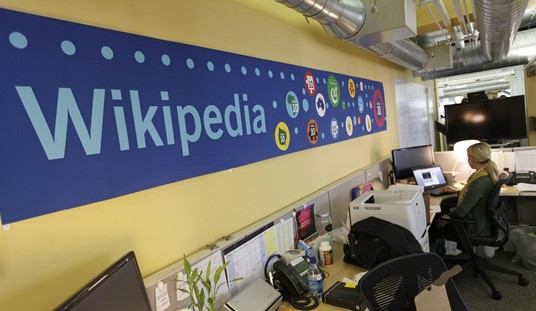We’re about to get our first look at Joe Biden’s proposed infrastructure package and if you tend to be subject to sticker shock, you’re probably going to want to sit down for this one. The first thing to know about Biden’s proposal is that he’s been working with Senator Bernie Sanders (I – Vermont) to redefine the term infrastructure. Perhaps you’ll be pleased to learn that you, our readers, are now “infrastructure.” That’s right, in addition to physical infrastructure, this gargantuan spending package will also address “human infrastructure.” (Associated Press)
“He’s talking about physical infrastructure and we’re talking about human infrastructure,” Sen. Bernie Sanders, the independent from Vermont who is chairman of the Budget Committee, said in an interview Tuesday.
The next thing to address is the price tag. We’d already heard some eye-popping numbers being tossed around, with suggestions that the package might run as high as $2.5 trillion. You can forget about that. The White House is now suggesting that it could go as high as four trillion. And the press is already lapping it up, comparing Biden to Franklin Roosevelt or Lyndon Johnson.
Swelling to $3 trillion or $4 trillion, Biden’s new package proposes a massive investment on par with the Franklin Roosevelt’s New Deal or Lyndon Johnson’s Great Society. Taken together, the administration’s approach is transforming the old ideas of infrastructure investment into a 21st century concept that includes developing the human capital of America’s population.
And just how does Status Quo Joe plan to pay for all of this? By raising taxes of course. He plans to jack up taxes on businesses and implement a “wealth tax” on the most successful Americans. Elizabeth Warren will no doubt be over the moon on that score.
The White House team led by National Economic Council Director Brian Deese explained that the $2 trillion in spending would unfold over eight years, paid for by the corporate tax increases over 15 years…
Funding Biden’s infrastructure initiative with tax hikes has been controversial. Raising the corporate tax rate to 28% from 21% would generate some $700 billion over 10 years, one of the people said. The administration is also eyeing a new global minimum tax.
Traditionally, spending plans deal in projections of ten years, not fifteen. Fifteen years of higher business taxes (which will slow and cool the economy) is a lot to ask by someone who’s barely finished changing the curtains in the Oval Office.
So what about this “human capital?” What sort of plans are included for that, now that we’re all part of the nation’s infrastructure? Here are some of the areas investment being listed by Biden’s team:
- Broadband
- Electric vehicle charging stations
- Clean energy
- Universal pre-K
- Free community college
Excuse me for asking, but what does any of that have to do with the actual infrastructure of the country? Okay, I suppose the electric charging stations might qualify, but we’re still a long way from needing huge numbers of them on a national level. And since when do the taxpayers have to pay for charging stations? The government doesn’t pay to build gas stations. Electricity is sold in the private sector just as gasoline is.
The rest of these things just represent yet another liberal wishlist, having nothing to do with infrastructure except under this new definition that Biden and Sanders have cooked up.
The dangerous part of all of this is that an infrastructure bill would qualify as a massive appropriations bill, making it eligible to be passed via reconciliation if needed. That could allow the Democrats to use the same scheme they employed for the COVID bill with zero bipartisan support. But this dog may not hunt. There are no Republicans who are going to vote in favor of a massive tax hike. It might squeeze through in the House, but I will be shocked indeed if there are 50 votes for such a proposal in the Senate. Frankly, I’d be surprised if they got to 45. The odds are that this package will wind up being broken up into dozens of smaller pieces, some of which will pass and others that will drop off of the map. Sadly, that sort of outcome usually results in Congress approving more spending but not coming up with any way to pay for it. But it’s all magical money anyway, right?








Join the conversation as a VIP Member